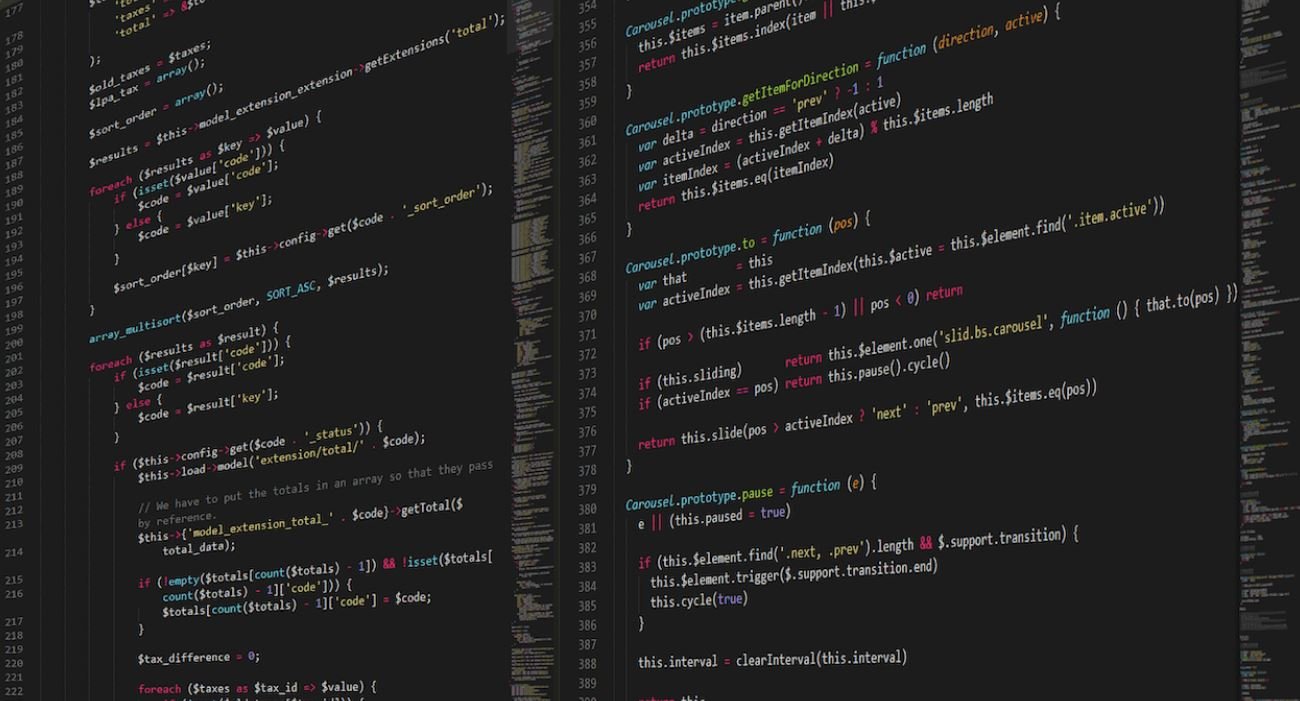AI Getting Dangerous
Artificial Intelligence (AI) has made significant advancements in recent years, revolutionizing various industries such as healthcare, finance, and transportation. While AI has brought many benefits, there are growing concerns about its potential dangers and risks. As AI continues to evolve, it is crucial to understand the potential ramifications and implement appropriate measures to ensure its safe usage.
Key Takeaways:
- AI poses potential risks and dangers to society.
- It is necessary to address ethical considerations and design AI systems with safety in mind.
- Regulations and policies must be established to govern AI development and deployment.
- Continuous research and collaboration are essential to mitigate AI-associated risks.
**One of the primary concerns surrounding AI is its potential for misuse and unintended consequences.** As AI systems become more autonomous and capable of making decisions, there is an increased risk of these systems being used for malicious purposes or causing harm due to algorithmic biases. It is crucial to consider the ethical implications and establish guidelines that prioritize the well-being and safety of individuals and society as a whole.
**AI-powered technologies such as autonomous vehicles, drones, and weapons systems have the potential to significantly impact our daily lives.** These technologies have the ability to make decisions autonomously and sometimes faster than humans, which raises concerns about safety and accountability. Striking a balance between human control and AI autonomy is crucial to ensure responsible usage and prevent potential dangers.
The Risks of Unintentional Consequences:
- Algorithmic Bias: AI systems can inadvertently reinforce or amplify existing biases present in training data, leading to discriminatory outcomes.
- Job Displacement: As AI automates routine tasks, there is a growing concern about job displacement and the need for reskilling or upskilling the workforce.
- Cybersecurity Vulnerabilities: Smart systems powered by AI can be susceptible to hacking, potentially leading to privacy breaches and cyberattacks.
- Superintelligence: The potential development of AI systems that surpass human cognitive abilities raises concerns about control and the ability to align their goals with human values.
**AI brings along tremendous potential for advancements and innovation, but it also calls for responsible development and usage** to minimize risks. A multidisciplinary approach involving experts from various fields is necessary to develop robust AI systems that prioritize safety and adhere to ethical standards.
Data Privacy and Security:
| Data Protection Measures | Impact on Privacy |
|---|---|
| Encryption and anonymization techniques | Protects sensitive information |
| Access controls and user permissions | Minimizes unauthorized access |
| Data breach response plans | Enables timely mitigation and recovery |
The Importance of Policies and Regulations:
1. Governments and regulatory bodies must establish clear guidelines and regulations to govern the development and deployment of AI systems.
2. Ethical frameworks should be implemented to ensure accountability and transparency in AI decision-making processes.
3. Continuous monitoring and evaluation of AI applications should be conducted to identify and address potential risks and biases.
**It is pivotal to maintain ongoing research and collaboration** among academia, industry, and policymakers to keep up with the rapid advancements in AI and to tackle emerging risks effectively. By actively working together, we can navigate the potential dangers posed by AI and harness its power to benefit society.
| Country | AI Regulation Status |
|---|---|
| United States | No specific nationwide AI regulations |
| European Union | Proposed regulations to address AI risks |
| China | Implemented various regulations on AI technology |
In conclusion, as AI continues to advance, it is crucial to prioritize safety, ethics, and regulations to mitigate potential risks and dangers associated with its usage. By adopting responsible and accountable practices, we can ensure that AI remains a transformative force for the benefit of humanity while minimizing unintended consequences.

Common Misconceptions
Misconception 1: AI will become uncontrollable and take over the world
One common misconception about AI is that it will eventually become so advanced and powerful that it will take over the world, leading to the extinction of humanity. However, this fear is largely exaggerated and stems from science fiction movies rather than reality.
- AI is designed to perform specific tasks and cannot think or act independently.
- AI systems are created and controlled by humans who set their limits and boundaries.
- AI technology is being developed with a focus on benefiting society, not causing harm.
Misconception 2: AI will replace human jobs completely
Another misconception people often have is that AI will completely replace human workers across all industries, leading to widespread unemployment. While it is true that AI can automate certain tasks, it is unlikely to replace human jobs entirely.
- AI is most effective when used in collaboration with human workers, enhancing their capabilities.
- AI systems require human oversight and intervention to ensure accuracy and prevent errors.
- New technological advancements often create new job opportunities as well.
Misconception 3: AI is always biased and discriminatory
Many people believe that AI systems are inherently biased and discriminatory, leading to unfair treatment of certain individuals or groups. While it is true that AI can unintentionally amplify existing biases found in the data it is trained on, this does not mean that AI is always biased.
- AI algorithms can be designed to mitigate biases and promote fairness.
- Bias in AI systems is a result of human biases reflected in the data, not an inherent flaw in AI technology itself.
- Efforts are being made to improve transparency and accountability in AI systems to prevent discriminatory outcomes.
Misconception 4: AI possesses human-like intelligence and emotions
Some people mistakenly believe that AI already possesses human-like intelligence and emotions, leading to the creation of conscious machines. However, AI is still far from achieving true human-like intelligence or consciousness.
- AI operates based on algorithms and patterns, lacking the ability to experience subjective emotions or self-awareness.
- While AI can simulate certain human-like behaviors, it does not possess the same depth of understanding or consciousness.
- AI advancements are focused on narrow, task-specific intelligence rather than general human-level intelligence.
Misconception 5: AI is a threat to personal privacy and security
There is a misconception that AI technology poses a significant risk to personal privacy and security, with fears of constant surveillance or malicious use of data. While there are valid concerns, it is important to separate fact from fiction and understand the true risks involved.
- Data privacy and security concerns extend beyond AI and are present in various aspects of technology.
- Regulations and ethical frameworks are being developed to ensure responsible use of AI and protect individual rights.
- AI can also enhance privacy tools and techniques, such as through improved encryption and anonymization methods.

The Rise of Chatbots
As technology advances, more and more companies are turning to artificial intelligence (AI) to enhance their customer service. One area where AI has made significant progress is in the development of chatbots. Chatbots are computer programs that simulate conversation with human users, providing immediate assistance and answers to their queries. The following table explores different industries that have implemented chatbots and the benefits they bring to businesses and customers.
| Industry | Chatbot Benefits |
|---|---|
| Retail | 24/7 customer support |
| Banking | Instant access to account information |
| Healthcare | Medical advice and appointment scheduling |
| Travel | Real-time flight updates and booking |
| Education | Personalized learning experiences |
Automation in Manufacturing
The implementation of AI and robotics in manufacturing processes has revolutionized the industry. Automation allows for increased productivity, improved precision, and reduced human error. This table presents some noteworthy applications of AI in manufacturing.
| Application | Advantages |
|---|---|
| Quality Control | Consistent and accurate inspections |
| Assembly Line | Faster production cycles |
| Inventory Management | Optimized stock levels and reduced waste |
| Error Detection | Early identification of defects |
| Supply Chain | Efficient logistics and tracking |
Beyond Human Capabilities
AI is not only about replacing humans but also augmenting their abilities. It empowers us to perform tasks that were once thought impossible or too time-consuming. The next table showcases remarkable achievements and milestones in the field of AI.
| Advancement | Description |
|---|---|
| Deep Blue | IBM’s chess-playing computer defeats world champion Garry Kasparov in 1997. |
| AlphaGo | Google’s AI defeats world champion Go player Lee Sedol in 2016. |
| Self-Driving Cars | Tesla, Waymo, and other companies develop autonomous vehicles. |
| Medical Diagnostics | AI algorithms aid in the early detection of diseases. |
| Language Translation | Highly accurate machine translation systems like Google Translate. |
The Ethical Dilemma
The rapid development of AI also raises important ethical considerations. The following table explores some of the potential ethical dilemmas associated with AI adoption.
| Dilemma | Description |
|---|---|
| Job Displacement | The fear of AI taking over human jobs and resulting unemployment. |
| Bias in Algorithms | AI systems reflecting and perpetuating existing societal biases. |
| Privacy Concerns | The potential abuse of personal data collected by AI applications. |
| Autonomous Weapons | The moral implications of AI-powered military weaponry. |
| Responsibility and Accountability | Who should be held responsible when AI systems make mistakes? |
AI in Entertainment
The entertainment industry has embraced AI to enhance various aspects of creative production and audience engagement. The table below showcases some ways in which AI is used in entertainment.
| Application | Description |
|---|---|
| Recommendation Systems | Streaming platforms use AI to suggest personalized content to users. |
| Special Effects | AI-assisted visual effects in movies and video games. |
| Music Composition | AI algorithms creating original pieces of music. |
| Virtual Influencers | AI-generated social media influencers with large followings. |
| Real-time Sports Analytics | AI algorithms providing insights and predictions during matches. |
AI in Cybersecurity
As technology evolves, so do the methods employed by cybercriminals. AI holds great potential in the fight against cyber threats due to its ability to detect patterns and anomalies. The subsequent table outlines how AI is employed in cybersecurity.
| Application | Benefits |
|---|---|
| Malware Detection | Quick identification of new and emerging malware patterns. |
| User Behavior Analysis | Detecting abnormal behavior that may indicate a cyber attack. |
| Network Monitoring | Continuous surveillance of network traffic for potential threats. |
| Vulnerability Assessment | Identification of weaknesses and potential entry points for malicious actors. |
| Automated Incident Response | Efficient and immediate handling of cybersecurity incidents. |
AI-Assisted Medical Research
AI has become an indispensable tool in medical research, accelerating discoveries and breakthroughs. Combining analytical power with vast datasets, AI significantly contributes to advancements in healthcare. The subsequent table highlights some notable AI applications in medical research.
| Application | Impact |
|---|---|
| Drug Discovery | Efficient identification of potential treatments and reduced development time. |
| Medical Image Analysis | Accurate and automated diagnosis through AI-assisted image interpretation. |
| Genomic Analysis | Uncovering genetic markers related to diseases for personalized medicine. |
| Diabetes Management | AI solutions assisting in insulin dosage calculations for diabetes patients. |
| Patient Risk Assessment | Predicting patient outcomes and risk factors for precision medicine. |
AI in Agriculture
The integration of AI in agriculture is revolutionizing farming practices and addressing the need for increased food production in a sustainable manner. The subsequent table explores how AI is being used in agriculture.
| Application | Benefits |
|---|---|
| Crop Monitoring | Early detection of plant diseases and optimization of irrigation. |
| Precision Farming | Optimized use of fertilizers, water, and pesticides for higher yields. |
| Livestock Management | Monitoring animal health, feeding, and behavior for improved productivity. |
| Weather Predictions | Accurate forecasting aiding in optimal planting and harvesting decisions. |
| Autonomous Farming | AI-powered robotic systems autonomously performing farming tasks. |
Conclusion
Artificial intelligence continues to make remarkable strides across various industries, revolutionizing processes, and introducing new possibilities. From chatbots enhancing customer service to AI playing a part in medical research, the potential of AI is immense. However, as its capabilities grow, so do the ethical dilemmas and concerns it raises, such as job displacement and privacy issues. Striking a balance between progress and responsible implementation is crucial as we navigate the future of AI.
Frequently Asked Questions
AI Getting Dangerous
What are the concerns associated with AI becoming dangerous?
As AI continues to advance, there are concerns about possible dangers it may present. These concerns include issues related to job displacement, privacy invasion, security threats, and the potential for AI systems to exceed human intelligence and control.
Can AI pose a threat to humanity?
While AI has the potential to bring significant benefits, there are concerns about its long-term effects. The possibility of AI systems developing their own goals and priorities, or surpassing human intelligence, raises the question of whether AI could become a threat to humanity if not properly controlled.
What measures are being taken to ensure AI safety?
Organizations and researchers are actively working on developing safety protocols for AI. Initiatives include incorporating ethical guidelines, ensuring transparency in AI algorithms, implementing responsible AI development practices, and encouraging collaboration across academia, industry, and policymakers to address AI safety concerns.
How can we prevent AI from becoming dangerous?
Preventing AI from becoming dangerous requires a combination of technical and policy measures. This includes building safety into the design of AI systems, implementing robust testing and verification processes, establishing regulatory frameworks, and fostering public awareness and understanding of AI risks and safety measures.
Are there any laws or regulations addressing AI safety?
While there are currently no specific laws or regulations solely focused on AI safety, many countries are working towards establishing guidelines and frameworks to ensure responsible AI development. The European Union’s General Data Protection Regulation (GDPR) and various sector-specific regulations often indirectly address certain aspects of AI safety.
Who is responsible for AI safety?
Responsibility for AI safety falls on various stakeholders. Developers and researchers have a responsibility to design and develop AI systems with safety in mind. Private companies and organizations using AI should also prioritize safety and adhere to best practices. Policymakers play a crucial role in establishing regulations and policies to ensure AI safety.
Is there a possibility of AI taking over the world?
While the idea of AI taking over the world is often portrayed in science fiction, it is not a realistic concern at the moment. Developing AI systems that can autonomously control the world would require advancements far beyond the current state of technology. However, it is essential to remain mindful and proactive about the potential risks associated with AI.
Are AI algorithms biased or discriminatory?
AI algorithms can exhibit bias or discriminatory behavior if not designed and trained carefully. Bias can arise from skewed training data or the influence of societal prejudices embedded in datasets. Addressing algorithmic bias requires comprehensive data collection, diverse and representative training sets, fairness-aware algorithm design, and ongoing evaluation and mitigation efforts.
What is the role of humans in controlling AI?
Humans play a crucial role in controlling AI. They are responsible for defining the goals and values that guide AI systems, designing ethical frameworks and regulations, monitoring and regulating AI development and deployment, and ensuring accountability for AI actions. Human intervention and decision-making are vital to prevent AI systems from causing harm or acting against human well-being.
Should we be worried about AI becoming dangerous?
Concerns about AI becoming dangerous are valid, but it is important to approach the topic with a balance of caution and optimism. By proactively addressing safety challenges, promoting responsible AI development, and implementing ethical guidelines, we can mitigate potential risks and leverage AI’s benefits for the betterment of society.




